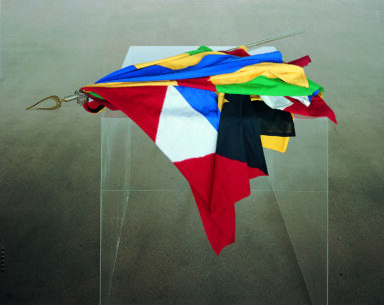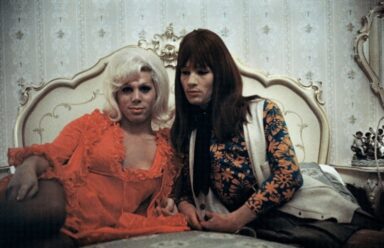Discovering Marco Bagnoli, the “scientific” artist that since the 70s has given a twist to minimal and conceptual art
Text by: Fiammetta Cesana
In the experimental and dynamic space of the Hangar Bicocca in Milan, among the soft lights of its bistro, Marco Bagnoli presented his new book curated by the historian Germano Celant. It’s the late evening of November 7th and between live music and a lavish buffet, the event has welcomed an enthusiastic audience, including art patrons, young talents and journalists like me. The occasion celebrates a volume of 512 pages, where Celant – famous for having coined the term “Arte Povera” and just acclaimed for the book, equally big, on Mimmo Paladino – conducts a detailed analysis on Bagnoli’s artistic research from the 70s to today.
In the golden age of imaginative and cultural experimentation, that of the late 60s and 70s, Bagnoli takes a road of his own, leading to an overcoming, or rather a synthesis, of linear and univocal tendencies that have marked minimal and conceptual art. Following scientific studies, he has engaged with the arts but without ever losing sight of the axioms of rational knowledge. His indeed is an investigation into the cognitive potential of the imaginary, which fuses intuitive and rational thought, philosophy and science, leading to a look at the future through the constant dialogue between past and present. Involving elements of oriental and occidental culture, his art speaks of mystical poetry, Sufism, Hinduism, Taoism, as well as western traditions going back to the ancient Romans.
“I am developing experiences, the result of which might be an accurate picture in which past and future end up on the same level” Bagnoli said in the early 1980s.
His 1986 “Mirabile verso di là dall’atmosfera” (Wondrous Verse Beyond the Atmosphere) explores the mysteries of different cultures, creating roof tiles struck by lightning. Releasing a very strong energy discharge, this element of nature, according to Chinese beliefs, is able to make us see beyond, perceive the essence of the whole universe…
Rejecting the dualistic opposition between form and significance, Bagnoli makes of his art a reality “elsewhere” in which the opposites converge synthesizing the whole. For the creator the artwork is an ideal connecting channel, a way to strive towards the absolute, and therefore aesthetics is essential to discover what the mysteries of earth conceal. In his “La Parola” (The Word) exhibited at the 2009 Venice Biennale, the form dictates the existence of space. The cubic and labyrinthine installation’s height in fact exceeds the eye level, emphasizing the dominion of the form over the intellect and inevitably pushing the viewer to imagine beyond the structure itself.
The aim of overcoming through the artistic dialectic development the limits of what we can see is clear also in the installation of a wooden ladder leading upwards, entitled “La Voce” (The Voice), realized in 1975 and then reworked in iron for the Neapolitan project by Achille Bonito Oliva. In 2016 the opera was exhibited at the Madre Museum in Naples together with Jauna Coeli (1988), a convex platter in copper reflecting the wide-angle view of the staircase and its ascension. This mirror goes beyond the architecture, climbing over the ceiling and, as Bagnoli suggested, “finding a support that was not there before”.
Distant from the divine, ethereal, affinity, of the art of the past, Bagnoli expresses the caducity of the artwork by getting it close to the terrestrial realm and man’s nature. His own Atelier, opened last year in Montelupo Fiorentino (Tuscany), reveals the intention to blend architecture with the surrounding natural landscape, making the building a work of art itself and respecting the five energy points of Feng shui.
Created together with the architect Toti Semerano, the structure includes over fifty works of the artist, constantly evolving, and is also home to the Spazio x Tempo association which promotes projects related to the relationship between art, business and territory. The importance for Bagnoli to promote the message of art emerges also in the concept of “opera scenica” (scenic work), fundamental principle of the atelier, which aims to insert the artwork in a context that generates the viewer’s participation.
Bagnoli has participated for many years at the Venice Biennale (1982, 1993, 1997, 2009) and at Documenta (1982, 1992). His solo exhibitions have been presented in major museums, including Castello di Rivoli, the Magasin in Grenoble, the De Appel in Amsterdam, the Center of Contemporary Art in Geneva. Over the years he has also made several site-specific installations in Tuscan places of exceptional artistic, architectural, religious and spiritual value, such as the Pazzi Chapel, the Villa Medicea dei Cento Camini in Artimino, the Octagonal Hall of the Fortezza da Basso.
To get Marco Bagnoli’s book visit Skira editore website


